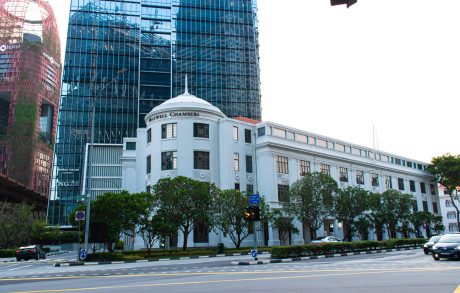On 9 December 2024, the Singapore International Arbitration Centre Rules 2025 (7th Edition) were published (the “SIAC Rules 2025”), bringing forth a new regime for disputes governed by the Singapore International Arbitration Centre (“SIAC”). The rules of SIAC were revised after consultation with SIAC’s users and various stakeholders as well as SIAC’s own experience of handling over 3,000 cases involving parties from more than 100 jurisdictions.
The SIAC Rules 2025 will apply to all arbitrations commenced on or after 1 January 2025 unless otherwise agreed by the parties. As such, parties with contracts, treaties or other instruments referring to SIAC for arbitration or SIAC rules will be governed by the SIAC Rules 2025.
Our Head of International Arbitration, Sherina Petit, along with Muizz Drabu and Taronish Mistry, provide a brief overview of the SIAC Rules 2025 and an insight into the new regime.
Changes under the SIAC Rules 2025
- “Streamlined Procedure”: The SIAC Rules 2025 have introduced a new “Streamlined Procedure” for disputes of low complexity. This procedure applies by default for disputes below one million Singapore dollars (S$1 million, or approximately £600,000). Under this procedure, the sole arbitrator is required to issue an award within three months from the date of constitution of the tribunal. It involves a sole arbitrator, reduced fees and simplified procedural mechanisms to expedite dispute resolution. Parties may agree to apply this procedure prior to the constitution of a tribunal, even where the value of the dispute is above the specified threshold. A party may also apply to exclude the application of this procedure in the arbitration.
To complement the Streamlined Procedure, the threshold for the “Expedited Procedure” (a fast-track procedure that requires an award to be delivered within six months from the date of constitution of the tribunal) has been raised to S$10 million (approximately £6 million). This is significant as the Streamlined Procedure does not allow for any document production or witness evidence (fact or expert) unless determined otherwise by the tribunal. This appears to be a consequence of the growing demand for cost-effective and simpler methods for the resolution of disputes via arbitration.
- Preliminary determination: The SIAC Rules 2025 codify and clarify the authority of the arbitral tribunal to make final and binding preliminary determinations on any issue and at any stage of the proceedings. It allows the tribunals to resolve key issues early in the arbitration process, and tribunals are required to render their decisions within 90 days.
The applications for preliminary determinations can be made if the parties agree, if the applicant demonstrates that it will be efficient (save time and costs, expedite resolution) or if the tribunal deems it necessary. This rule complements existing SIAC mechanisms and promotes effective case management. This is separate from the
“early dismissal” procedure and allows the tribunal to rule on any factual or legal issue if it leads to efficiency and cost savings.
- Powers of Emergency Arbitrator and protective preliminary order applications: Under SIAC Rules 2025, a party can now apply to the Registrar for the appointment of an Emergency Arbitrator before filing a Notice of Arbitration, which must then be filed within seven days from the date of the Registrar’s receipt of the application. Additionally, parties can seek protective preliminary orders to prevent actions that would undermine the emergency interim or conservatory measure (such as injunctions and preservation of assets) even before informing any counterparties. The Emergency Arbitrator must decide on such requests within 24 hours of their appointment. Applicants must promptly notify any counterparties of the preliminary order within 12 hours of the order, or else the order will expire three days after issuance.
This procedure addresses the need for immediate relief in early disputes while maintaining procedural integrity and fairness. This is a significant and bold revision as parties can obtain ex parte measures in an arbitration prior to issuing the notice of arbitration and without resorting to the usual court process.
- Coordinated proceedings: Building on the existing procedures for multi-contract, multi-party disputes, notably for consolidation and joinder, the SIAC Rules 2025 specifically provide for coordinated resolution of multiple arbitrations involving common legal or factual issues where the same tribunal has been appointed. A party may request that arbitrations be conducted concurrently or sequentially, be heard together with aligned procedural steps or that one of the arbitrations be suspended pending the determination of any of the other arbitrations.
This will avoid duplication of costs and greatly reduce the risk of conflicting outcomes in related proceedings. This process will address the shortcomings of the consolidation process and ensure that efficiency is promoted while costs are reduced.
- Third-party funding arrangements: Under the SIAC Rules 2025, parties are now required to disclose details about any third-party funding, which information arbitrators can use when determining costs. The rules now also prevent a party from entering into a third-party funding agreement following the tribunal’s constitution that may give rise to a conflict of interest with any member of the tribunal.
This is a key development given the rise of third-party funding in arbitrations. Moreover, the increased focus on impartiality, independence and lack of bias of the arbitral tribunal has resulted in this change as the scope extends beyond simply the parties or counsel involved in the arbitration. A party may be prevented from entering into a third-party funding arrangement if it creates issues of conflict or bias with the arbitral tribunal.
- Appointment and challenge of arbitrators: The SIAC Rules 2025 are more prescriptive on issues concerning the appointment of arbitrators. Under these new rules, the presiding/sole arbitrator must be of a different nationality than the parties unless agreed otherwise by the parties. Further, despite an agreement between the parties in relation to the terms of appointment of an arbitrator, the President of the SIAC court may revoke the appointment of an arbitrator if there is a substantial risk of unequal treatment that may affect the validity or enforceability of the award.
The SIAC Rules 2025 also incorporate grounds to challenge the appointment of arbitrators on a de jure or de facto basis for their inability to perform their functions. This represents a clear trend of SIAC responding to parties’ demands, especially to ensure arbitrations continue smoothly and there are no issues in the enforcement of the final award.
- Timeline to issue award: The SIAC Rules 2025 require the arbitral tribunal to submit a draft award within 90 days of the last submission filed in the arbitration proceedings. This is to reduce the timeline and the discretion accorded to arbitrators under the previous rules while ensuring a quicker arbitration process.
- Mediation: The SIAC Rules 2025 promote mediation and encourage parties to resort to such measures for dispute resolution. This may be prompted by the parties or by the tribunal in the exercise of its inherent powers. This reflects a growing trend to promote mediation as a suitable and cost-effective mechanism for parties to resolve disputes.
- Registrar Powers: The Registrar of SIAC is empowered to refer issues of jurisdiction to the SIAC Court due to non-participation of a party or issues of existence, validity or applicability of the arbitration agreement being raised by a party. The Registrar is also empowered to hold an administrative conference with the parties prior to the constitution of the tribunal to discuss procedural or administrative directions. This suggests a growing demand by the parties for active involvement of institutions while the tribunal is being formally constituted.
- SIAC Gateway and information security measures: Recognising the growing and increased use of technology in arbitration, the SIAC has launched its cloud-based case management platform, called the “SIAC Gateway”. The SIAC Gateway provides for, inter alia, electronic filing of submissions, exchange of communications, storing of documents and an online payment system for fees and costs of the arbitration, without any additional cost to the parties. This represents a shift from communications/submissions by email to the development of an electronic platform for all communications/submissions in the arbitration.
Further, with the heightened sensitivity around data, the SIAC Rules 2025 encourage the tribunal and the parties to consider and adopt information security measures for the conduct of the arbitration.
Conclusion
The SIAC Rules 2025 reflect the evolution of arbitration over the years. These new rules promote efficiency, reduce costs, provide greater options for parties and address the contemporary issues arising in the practice of arbitration across the world.
The need for urgent ex-parte measures has resulted in the enhanced powers of the emergency arbitrator under the SIAC Rules 2025. The recognition of complex multi-party and multi-contract disputes has ushered the evolution of coordinated proceedings under the SIAC Rules 2025.
The need for disclosure of third-party funding arrangements signifies the importance of greater scrutiny over impartiality and independence of arbitrators. The development of the Streamlined Procedure and the enhanced threshold of the Expedited Procedure signify the need to reduce formal procedures for low-value and straightforward disputes and ensure that the SIAC Rules 2025 work effectively for the interests of the parties. Similarly, the procedure for preliminary determination of issues has been developed, and the timelines for issuing the arbitration award have been specified to increase efficiency and reduce timelines and costs in the arbitration.
The delineated scope regarding the appointment of arbitrators and the increased grounds for their challenge suggest that SIAC is live to the issues faced by the parties, especially concerning enforcement of awards.
The adoption of SIAC Gateway highlights the increased involvement of technology in case management and is similar to other cloud-based case management platforms of other institutions. The greater powers of the Registrar reflect parties’ growing need for greater involvement of arbitral institutions.
Lastly, the promotion of mediation by the SIAC and its encouragement in the 2025 Rules signifies an increasing trend for parties to resolve their dispute by mediation and reduce costs.
With these updates, now is an excellent time to review existing contracts providing for SIAC arbitration. These changes may significantly impact dispute resolution processes. Additionally, as you plan to execute new contracts, SIAC is worthy of fresh consideration in light of the updates.
You can find further information regarding our expertise, experience and team on our International Arbitration page.
If you require assistance from our team, please contact us.
Subscribe – In order to receive our news straight to your inbox, subscribe here. Our newsletters are sent no more than once a month.






